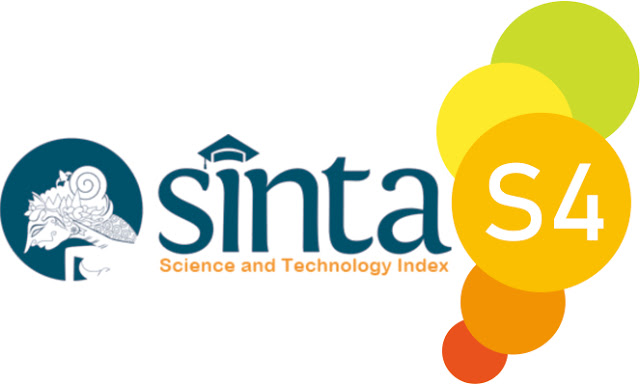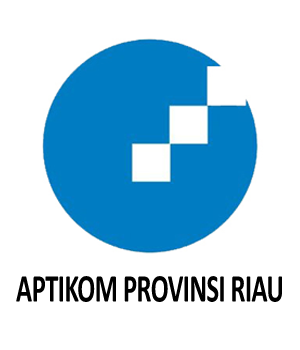Geographic Information System of Patient Development in Jayapura Hospital During Pandemic
Abstract
Jayapura is a city has population over 240,340 people (Source: Jayapura administration department 2021) and will be increasing in the number of patients in hospitals every year, it will have impact on all hospitals in Jayapura. With this condition, the level of patient development during pandemic and before pandemic will be known. Based on the results of data collection, it is possible to classify categories of disease and treatment in hospitals to choose the best hospital in handling disease and treating patients, especially during pandemic because health management is having difficulties because the medical team focuses more on pandemic patients. Therefore, it is necessary to have geographic information system to collect and provide information to public about the level of development of patients in hospitals, using the PIECES analysis method, designing using Unified Modeling Language (UML) method, using waterfall development method and using QGIS for software used. This research resulted the Geographic Information System for the development of patients in Jayapura City Hospital during Pandemic as means of information for patients in Jayapura.
Downloads
References
[2] J. Aryanto Lende, M. Orisa, and R. Primaswara P, “Sistem Informasi Geografis Pemetaan Penyandang Masalah Kesejahteraan Sosial (Pmks) Di Provinsi Nusa Tenggara Timur Berbasis Web,” JATI (Jurnal Mhs. Tek. Inform., vol. 5, no. 1, pp. 225–234, 2021, doi: 10.36040/jati.v5i1.3318.
[3] S. S. Maesaroh, “Upaya Peningkatan Daya Saing Usaha Mikro, Kecil, dan Menengah (UMKM) Kota Tasikmalaya melalui Pemanfaatan System Informasi Geografis (SIG),” J. Ilmu Manaj. Dan Bisnis, vol. 11, no. 1, pp. 61–74, 2020, doi: 10.17509/jimb.v11i1.21148.
[4] A. S. Ramadhan Susilo Utomo, Arief Laila Nugraha and Departemen, “Jurnal Geodesi Undip Januari 2020Jurnal Geodesi Undip Januari 2020,” vol. 9, no. 1, pp. 275–284, 2020.
[5] N. W. Al-Hafiz and M. H. Siregar, “GEOGRAPHIC INFORMATION SYSTEMS FOR THE DISTRIBUTION OF COMMUNITY SERVICE ACTIVITIES IN,” J. INFOKUM, vol. 10, no. 1, pp. 236–243, 2021.
[6] I. B. Komang Krizena Adhiarta, W. Witanti, and P. Nurul Sabrina, “Pemilihan Lokasi Awal Usaha Bagi Usaha Mikro Kecil Dan Menengah Dengan Metode Analitycal Hierarchy Process,” J. Inf. Technol., vol. 3, no. 2, pp. 43–46, 2021, doi: 10.47292/joint.v3i2.63.
[7] H. O. L. Wijaya, “Implementasi Metode Pieces Pada Analisis Website Kantor Penanaman Modal Kota Lubuklinggau,” JUSIM (Jurnal Sist. Inf. Musirawas), vol. 3, no. 1, pp. 46–55, 2018, doi: 10.32767/jusim.v3i1.289.
[8] A. Josi, “Penerapan Metode Prototyping Dalam Membangun Website Desa (Studi Kasus Desa Sugihan Kecamatan Rambang),” Jti, vol. 9, no. 1, pp. 50–57, 2017.
[9] I. G. N. W. Pratama, I. G. . A. C. Putra, and A. I. Datya, “Sistem Informasi Manajemen Praktek Kerja Lapangan Berbasis Website ( Studi Kasus Program Studi Sistem Informasi Universitas Dhyana Pura Bali ),” J. Teknol. Inf. dan Komput., vol. 3, no. 1, pp. 342–351, 2017, doi: 10.36002/jutik.v3i1.236.
[10] I. putu A. E. Pratama, Sistem Informasi dan Implementasinya. Bandung: Informatika, 2014.
[11] M. H. Siregar, “INFORMATION SYSTEM DESIGN OF SHAHIRAH RAHMAWATI DENTIST ’ S PRACTICE BASED ON WEB AND SMS GATEWAY USING THE RATIONAL UNIFIED PROCESS METHODOLOGY,” vol. 4, no. 1, pp. 85–92, 2021, doi: 10.36378/jtos.v4i1.1393.
[12] M. H. Siregar, “Rancang Bangun Pengembangan Aplikasi Pemilihan Presiden Mahasiswa Melalui Sms Gateway,” J. Teknol. Dan Open Source, vol. 2, no. 1, pp. 102–111, 2019, doi: 10.36378/jtos.v2i1.150.
Copyright (c) 2021 Andrian Sah, Suhardi Suhardi, Siti Nurhayati

This work is licensed under a Creative Commons Attribution-ShareAlike 4.0 International License.
This is an open-access article distributed under the terms of the Creative Commons Attribution-ShareAlike 4.0 International License which permits unrestricted use, distribution, and reproduction in any medium. Users are allowed to read, download, copy, distribute, search, or link to full-text articles in this journal without asking by giving appropriate credit, provide a link to the license, and indicate if changes were made. All of the remix, transform, or build upon the material must distribute the contributions under the same license as the original.















